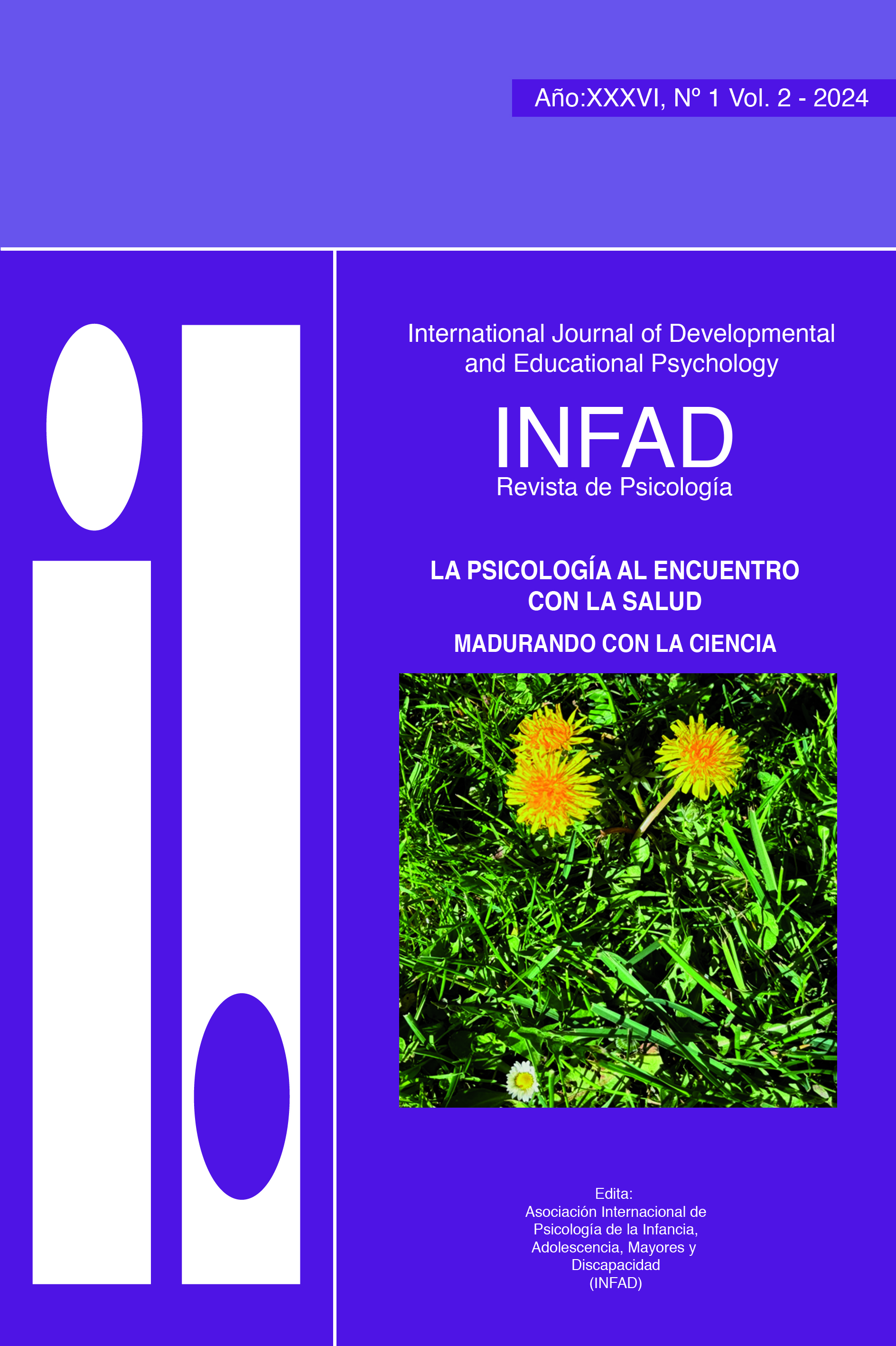Los efectos del uso del móvil en el desarrollo de las funciones ejecutivas
Contenido principal del artículo
Resumen
El impacto del aislamiento social en relación con el mundo real es amplio y es posible que se deba a los cambios sociales y antropológicos provocados por el uso del móvil. La necesidad de compartir información de manera inmediata no se limita a una cuestión de edad ni está restringida a un contexto específico. Puede manifestarse en cualquier entorno, ya sea escolar, familiar, social, profesional, cultural o incluso en las relaciones personales que puede desencadenar en una adicción actualmente no regulada. El objetivo de este estudio es identificar si existe relación entre el uso del móvil y la posibilidad de desarrollar una adicción en base a variables sociodemográficas, así como estudiar los posibles deterioros en el correcto desarrollo de las Funciones Ejecutivas. Para ello se ha estudiado la influencia de diferentes variables como edad y sexo de los participantes, su localización geográfica, así como su formación académica o situación laboral mediante un diseño descriptivo transversal. En este diseño transversal se estudia las diferencias entre la variable independiente (uso problemático del móvil) en función de las variables dependientes (género, edad, nivel de estudios, situación actual laboral y localidad). La muestra para este estudio está constituida por 196 participantes y es de tipo no probabilístico e incidental y fue evaluada mediante un cuestionario ad-hoc, el cual está compuesto por 10 ítems que incluyen variables sociodemográficas, uso del móvil, horas de su utilización, frecuencia de apagado y encendido de este por la noche, para qué se utiliza con mayor frecuencia, y por la escala MOBILE PHONE USE SCALE de López-Fernández et al. (2012), compuesta por 26 ítems, que tienen por objetivo explorar la existencia o ausencia de un uso excesivo o problemático del móvil. Los resultados indican que la variable edad y la variable sexo influyen significativamente en el riesgo del desarrollo del uso excesivo del móvil, siendo las demás variables sociodemográficas no relevantes para un uso problemático del móvil. En base a ello se proponen unas pautas de intervención psicológicas para el correcto desarrollo de las funciones ejecutivas en riesgo de desarrollar una posible adicción o uso excesivo del móvil.
Detalles del artículo
Número
Sección

Esta obra está bajo una licencia internacional Creative Commons Atribución-NoComercial-SinDerivadas 4.0.
Aquellos autores/as que tengan publicaciones con esta revista, aceptan los términos siguientes:
- Los autores/as conservarán sus derechos de autor y garantizarán a la revista el derecho de primera publicación de su obra, el cuál estará simultáneamente sujeto a la Licencia de reconocimiento de Creative Commons que permite a terceros copiar y redistribuir el material en cualquier medio o formato bajo los siguientes términos: —se debe dar crédito de manera adecuada, brindar un enlace a la licencia, e indicar si se han realizado cambios. Puede hacerlo en cualquier forma razonable, pero no de forma tal que sugiera que usted o su uso tienen el apoyo de la licenciante (Atribución); — no se puede hacer uso del material con propósitos comerciales (No Comercial); — si se remezcla, transforma o crea a partir del material, no podrá distribuirse el material modificado (Sin Derivadas).
- Los autores/as podrán adoptar otros acuerdos de licencia no exclusiva de distribución de la versión de la obra publicada (p. ej.: depositarla en un archivo telemático institucional o publicarla en un volumen monográfico) siempre que se indique la publicación inicial en esta revista.
- Se permite y recomienda a los autores/as difundir su obra a través de Internet (p. ej.: en archivos telemáticos institucionales o en su página web) antes y durante el proceso de envío, lo cual puede producir intercambios interesantes y aumentar las citas de la obra publicada. (Véase El efecto del acceso abierto).

Este obra está bajo una licencia de Creative Commons Reconocimiento-NoComercial-SinObraDerivada 4.0 Internacional.
Cómo citar
Referencias
Castillo, M. y Ruiz-Olivares, R. (2019). La percepción de riesgo y su relación con el uso problemático del teléfono móvil en adolescentes. Revista Española de Investigaciones Sociológicas, 168, 21-34.
Cerro, D., Rojo, J., González, Mª,A., Madruga, M., Prieto, J. (2020). Dependencia y adicción al smartphone de una muestra de jóvenes extremeños: diferencias por sexo y edad. Tecnología Ciencia y Educación, 17, 35-53
Chow, S., Leung, G., Ng, C y Yu, E. (2009). A screen for identifying maladaptative internet use. International Journal Of Mental Health and Addiction, 7, 324-332.
De-Sola, J., Talledo, H., Rodríguez de Fonseca, F. y Rubio, G. (2017). Prevalence of problematic cell phone use in an adult population in Spain ass assessed by the Mobile Phone Problem Use Scale (MPPUS). PloS ONE 12(8): e0181184.
Estévez, A., Urbiola, I., Iruarrizaga, I., Onaindia, J., Jauregui, P. (2017). Dependencia emocional en el noviazgo y consecuencias psicológicas del abuso de internet y móvil en jóvenes.
Fuertes, A., Martínez, J.L., y Hernández, A. (2001). Relaciones de amistad y competencia en las relaciones con los iguales en la adolescencia. Revista de Psicología General y Aplicada, 54, 531-546
Ine. (2023). Encuesta sobre equipamiento y uso de Tic en los hogares.
López-Fernández, O., Honrubia-Serrano, M. L., & Freixa-Blanxart, M. (2012). Adaptación española del” mobile phone problem use scale” para población adolescente. Adicciones, 24(2), 123-130.
Muñoz- Rivas, M. y Agustin, S. (2005). La adicción al teléfono móvil. Psicología Conductual, 13, 481-493.
Muñoz- Miralles, R., Ortega-González, R., Batalla-Martínez, C., López-Morón, M.R., Maria, J., Torán-Monserrat, P. (2014). Acceso y uso de nuevas tecnologías entre los jóvenes de educación secundaria, implicaciones en salud. Estudio JOITIC. Atención Primaria, 46(2), 77-88
Sánchez-Carbonell, X., Beranuy, M., Casteññana, M., Chamorro, A. y Obsert, U. (2008). La adicción a Internet y el móvil: ¿moda o trastorno? Adicciones, 20, 149-160
Vidal, F., (2018). La última modernidad. Editorial SAL TERRAE. España.

